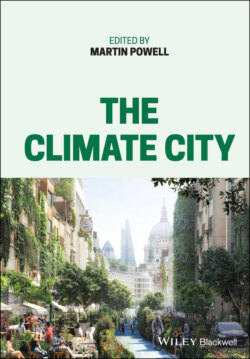Читать книгу The Climate City - Группа авторов - Страница 36
Uruk
ОглавлениеThe Epic of Gilgamesh (c. 2150–1400 BCE) stands as the oldest piece of epic world literature.4 This great Sumerian poetic work pre-dates Homer’s writing by 1,500 years and tells the story of Gilgamesh the semi-mythic King of Uruk in Mesopotamia and his quest for immortality. The hero, King Gilgamesh, leaves his Kingdom following the death of his best friend to find the mystical figure Utknapishtim and gain eternal life. It becomes clear throughout the tale that Gilgamesh’s fear of death is actually a fear of meaninglessness, and, although he fails to win immortality by the end of the tale, it is the quest itself that ultimately gives meaning to his life.
From antiquity to the present day, we have come to know this seemingly immortal theme well, its influences refracted across literature and drama whether it be Homer, Dante, John Milton, Ovid, James Joyce, or the Marvel universe! There is a reason this theme has had such wide-reaching consequences. There is something profoundly hopeful about it. Gilgamesh is defined by the pursuit of the unknown, and his bravery to face that which he did not understand and to believe in a better outcome. All of this is reflected in the extraordinary city he ruled over.
Uruk accounts for a number of the world’s firsts in the development of civilization. Among these are the origins of writing, the first example of architectural work in stone, the building of great stone structures such as ziggurat, and the development of cylinder seal.5 Most importantly, however, it is immortal in our minds because it is considered to be the first true city in the world. According to the Sumerian King List, it was founded by King Enmerkar at around 4500 BCE and was located in the southern region of Suler (modern-day Iraq).6 It began as two separate settlements, Kullaba and Eanna, which merged together to form a town covering 80 hectares; at the height of its development in the Early Dynastic period, the city walls were 9.5 km long, enclosing a massive 450 hectares, and may have housed up to 50,000 people.7
This population grouping was a major step forward for civilization and, technically, the very first instance of “urban development” we have on record. From two distinct settlements, construction, pooling resources, city planning, merging different peoples and doubling its population size, creating clear boundaries, and a lot of imagination, a city was born. It is no accident that Uruk was also the first city to develop cylinder seal, which the ancient Mesopotamians used to designate personal property or a signature on documents, clearly meeting the need for the importance of the individual in the collective community. We can all imagine the problems they faced that would call for such an innovation.
Uruk was a successful city also in that it was continuously inhabited from its founding until c. 300 CE when people began to desert the area. It clearly met the demands of its citizens for thousands of years, and although it took many hundreds of years after this for it to be excavated, Uruk has remained an immortal city in our minds. Uruk is a lesson in innovation and imagination.
